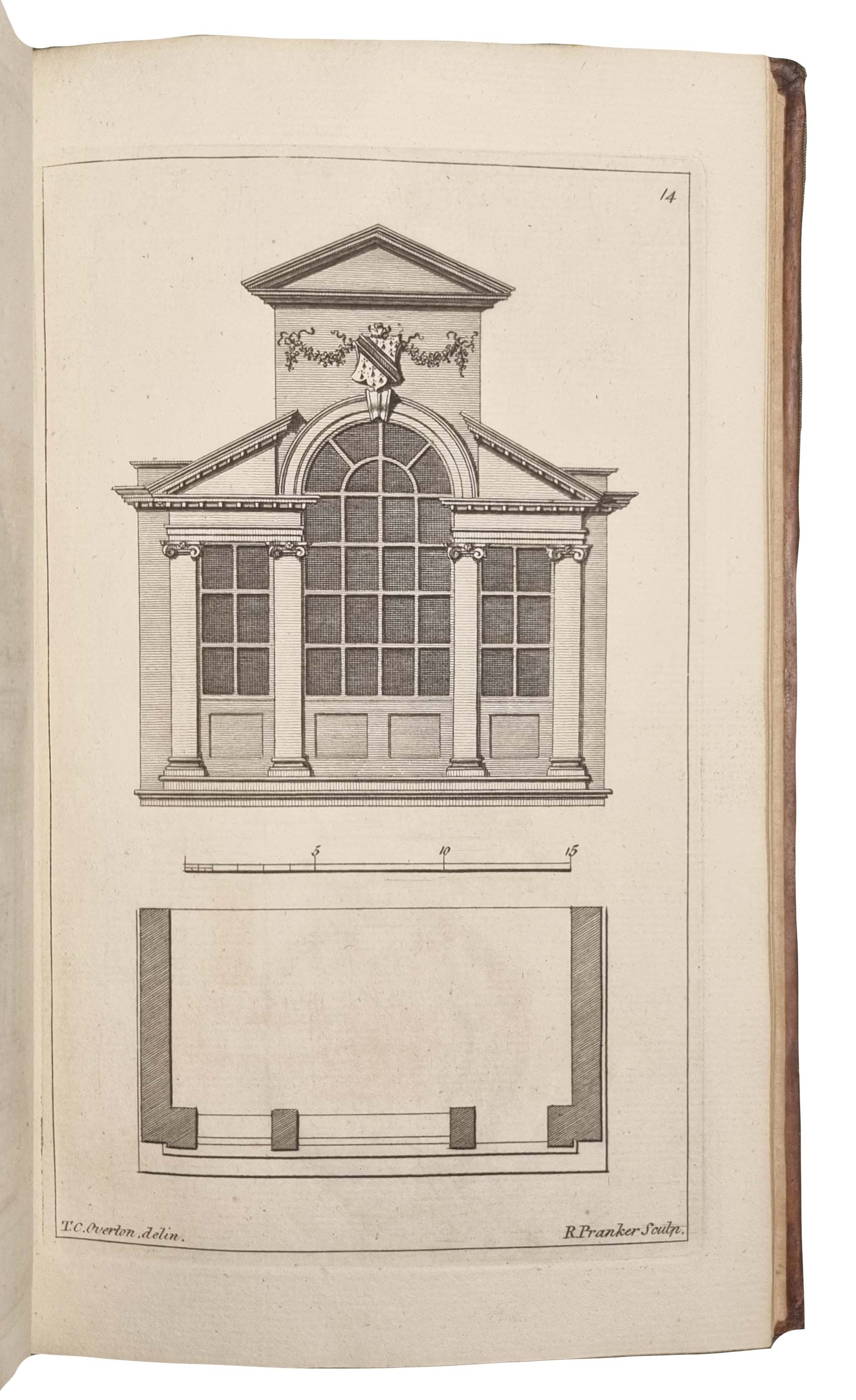OVERTON, Thomas Collins.
The temple builder’s most useful companion […]
London, Henry Webley, 1766.£4,950.00
8vo. pp [4] 8-19 [1] (without the list of subscribers) plus 49 full page engraved plates and 1 double page, by Collins and engraved by Robert Pranker (fl.1761-1767). Roman letter. Frontispiece, designed by Wale (1714-1786) and engraved by Pranker. Publisher’s advertisement for William Wrighte’s Grotesque Architecture on verso of t-p. Short descriptions of each plate. Very good clean copy, plates in excellent impression, late 18th C. calf with gilt-tooled border and ornamental gilt spine, a.e.r, joints restored.
This second edition was given a ‘more commercially attractive’ title and was smaller than the first of the same year, intended to be a ‘routine pattern book’ for clients to refer to (Harris 338). It contains ‘pastiches of Palladian, Gibbsian, Batty Langley ‘gothick’ and generalised ‘antique’ elements’ (Harris 338) of architectural designs including the design for a triangular villa belonging to James Maynard (pl.41). It was built in 1766 ‘on the edge of a hill, which commands a fine prospect of the country as far as Bath on one side, and as far as Tetbury on the other’ (pp.16). He also provides elements of interior design, with each corner of an equilateral summer house containing a particular feature, such as a staircase, closet, or chimney.
The text describes each of the 50 plates, followed by the corresponding illustrations, mostly consisting of facades, often accompanied by a floorplan. These descriptions specify the main functions of each building, and include summer houses, temples, keepers’ lodges, and castle-like villas, as well as possible building materials and ideas for decorative details, for instance the Apollo Belvedere, as seen in plate 18. All the designs are either symmetrical or centrally planned, adhering to classical ideals of proportion and symmetry, repopularised in the Palladian style, which aimed to reinterpret ancient architecture for contemporary usage.
The frontispiece depicts an obelisk and rectilinear temple set in countryside, a rotunda emerging in the foreground, with two labelled statues of Palladio and Inigo Jones set before. Below is a quotation by Pope, relating the style of Palladio and Jones to the Roman architect Vitruvius. It was engraved by Samuel Wale (1714-1786), a renowned book illustrator, producing over 400 original drawings during his career.
Andrea Palladio (1508-1580) was an Italian architect, founder of the eponymous ‘Palladian’ movement, which influenced much of the architecture of the 16th to 18th centuries. His key designs include the Villa Rotonda (c.1590), a quadrilateral structure with four temple facades, placed in a ‘locus amoenus’, on top of a hill near Vicenza, a possible source of inspiration for Maynard’s villa.
Inigo Jones (1573-1652) was a British architect and follower of the Palladian architectural movement, credited as a key figure in the introduction of the style to England. His most famous works include the Queen’s House at Greenwich (1616-1619) and the Banqueting Hall at Whitehall (1619-1622).
ESTC: T90195. Harris 610. Not in Fowler.In stock







